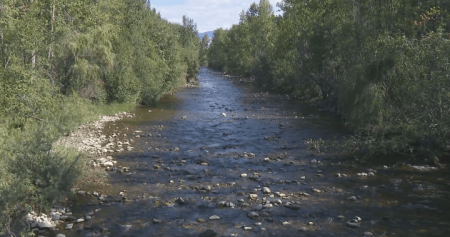New Brunswick officials are confident in their preparations for the upcoming fire season, with 143 trained firefighters, 24 student recruits, and two additional water bombers. Environment Minister Mike Holland stated that while the province’s 10-year average is 246 fires per year, with 4.5 square kilometers of forest burned, last year saw a lower number of fires but greater destruction, with 8.6 square kilometers torched. The majority of wildfires in 2023 were caused by human activity, highlighting the need for preparedness and quick response to ensure the safety of New Brunswickers in the face of future blazes.
Roger Collet, a wildfire prevention officer, emphasized the importance of having a full contingent of trained personnel ready to battle fires at a moment’s notice. New Brunswick has seen a rise in both the frequency and intensity of wildfires, making it crucial for the government to be well-equipped to handle such situations. Collet noted that the province now has eight aircraft for water-carrying operations, up from six the previous year, providing sufficient resources for the current fire season. However, if the situation escalates beyond the norm, additional help may be required to combat wildfires effectively.
Neighboring Nova Scotia experienced an unprecedented series of wildfires last year, leading to the evacuation of thousands of residents and the destruction of numerous homes and structures. These events serve as a stark reminder of the potential devastation that wildfires can cause, underscoring the need for robust preparations and response measures. Collet highlighted the troubling trend in New Brunswick where wildfires have become not only more frequent but also more intense, necessitating urgent attention and action to address the situation. The government is focused on ensuring the safety of communities and minimizing the impact of wildfires through proactive measures.
New Brunswick’s fire season typically begins on the third Monday of April, starting in the south and spreading northwards as summer progresses. Despite ample precipitation over the winter, which mainly came in the form of rain rather than snow, there is a possibility of grass fires erupting earlier than usual. Federal Natural Resources Minister Jonathan Wilkinson warned of heightened wildfire risks across the country due to above-average temperatures and limited precipitation, creating drought-like conditions conducive to fires. The combination of climate change and population growth is leading to an increased risk of wildfires near urban areas, affecting nearly four million Canadians residing in forested regions.
The government’s efforts to bolster firefighting capabilities and readiness reflect a proactive approach to mitigating the impact of wildfires in New Brunswick. By increasing the number of trained firefighters, student recruits, and water bombers, officials are positioning themselves to effectively respond to potential blazes and safeguard communities. The collaboration between provincial and federal authorities underscores the importance of coordinated action in addressing the evolving challenges posed by climate change and the growing risk of wildfires. As the 2024 fire season unfolds, the focus remains on protecting residents, preventing destructive wildfires, and ensuring a swift and effective response to emergencies.













